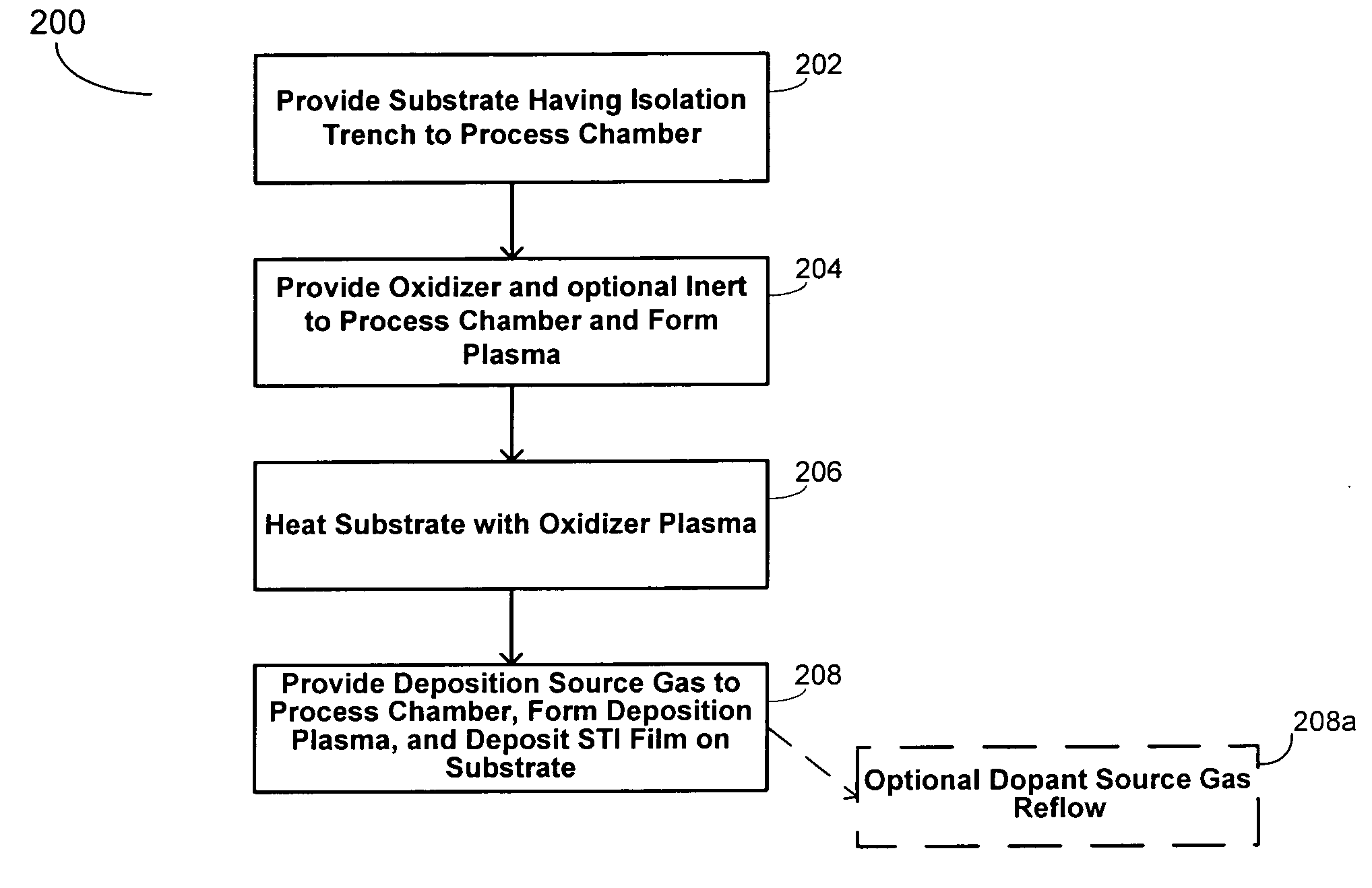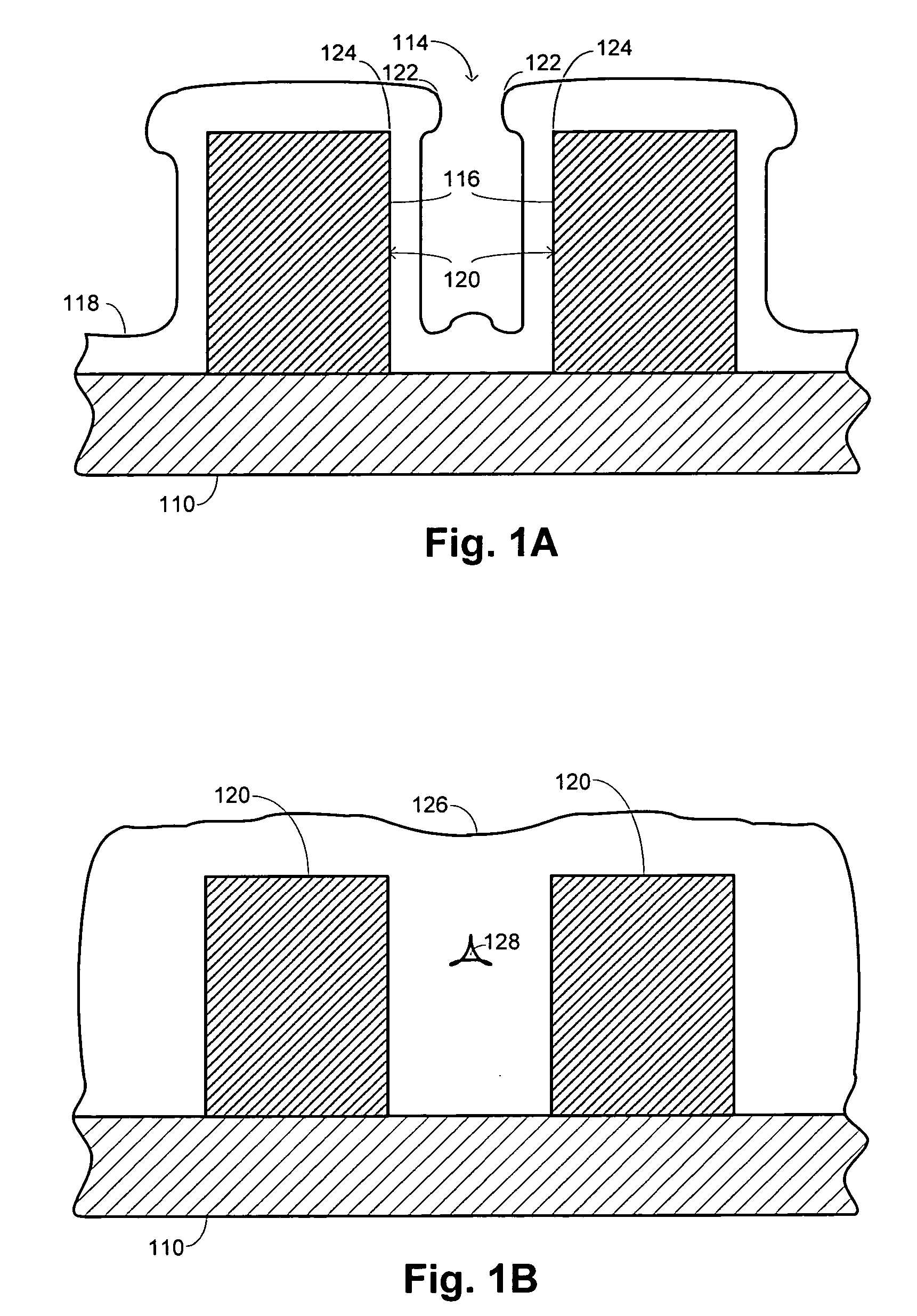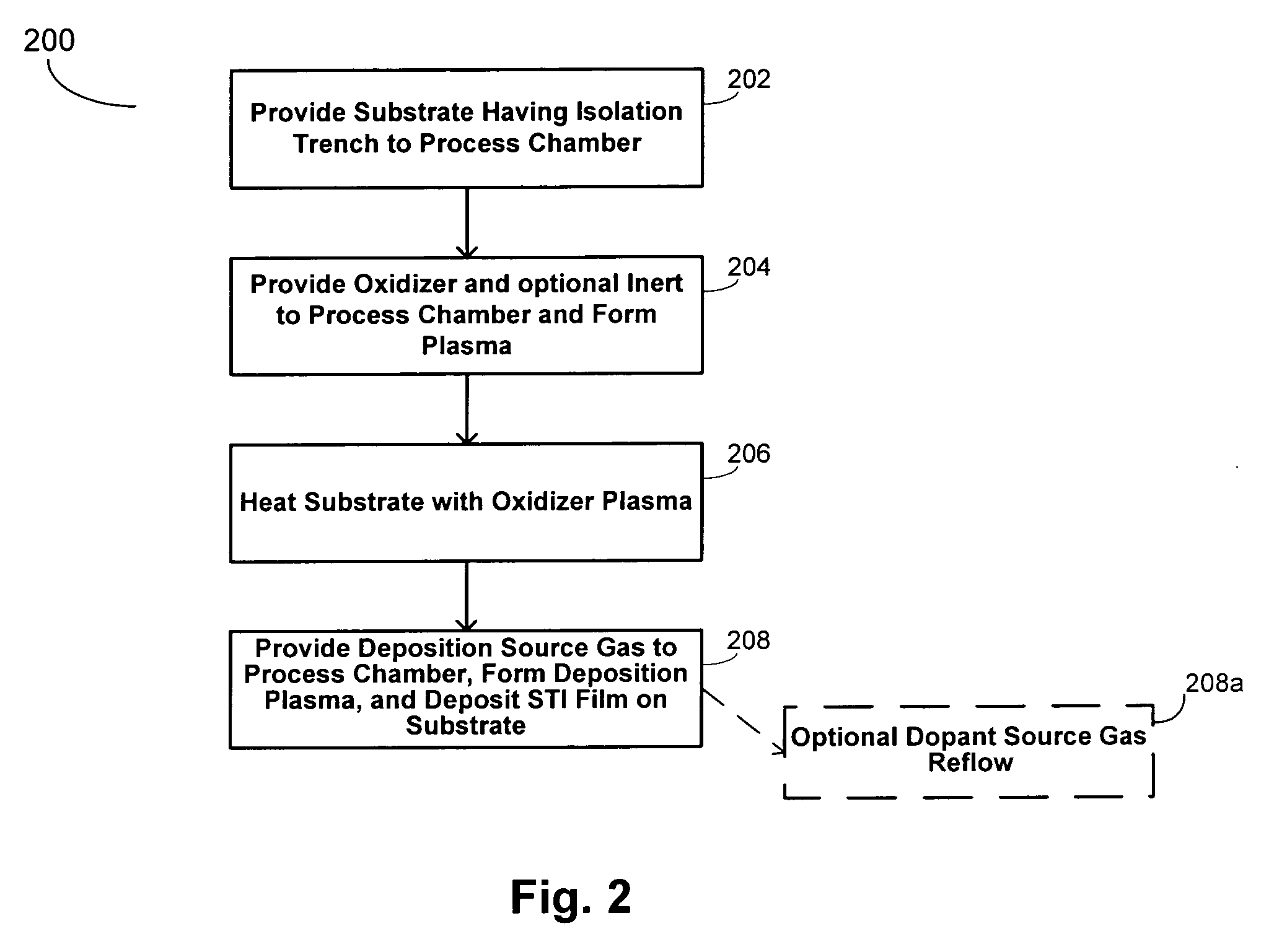Low stress STI films and methods
a technology of low stress and sti, applied in the field of low stress sti films and methods, can solve the problems of difficult to fill spaces using conventional methods, increased aspect ratio gaps in some applications, and fsg films, and achieve low compressive stress, good gap filling characteristics, and low compressive stress
- Summary
- Abstract
- Description
- Claims
- Application Information
AI Technical Summary
Benefits of technology
Problems solved by technology
Method used
Image
Examples
Embodiment Construction
I. Introduction
[0019] The present invention generally relates to low compressive stress doped silicate glass for STI application. By way of non-limiting example, the compressive stress lowering dopant may be fluorine, germanium, or phosphorous.
[0020] In one embodiment, fluorine may be incorporated into silicate glass to result in low stress STI films (e.g., an in-situ etch assisted (ISEA) deposited film, ˜180 MPa). Previous FSG processes utilizing fluorine typically result in an MM film having a compressive stress of approximately <80 MPa. However, in accordance with the present invention, it has been discovered that higher fluorine levels may be incorporated into STI films to thereby further reduce the compressive stress of the resultant film to levels below 180 MPa (e.g., below about 170 MPa, 150 MPa, 100 MPa, 90 MPa, 70 MPa, etc.) with good gap fill capabilities. The present invention combines the advantages of ISEA deposition and FSG films to obtain higher fluorine levels at hi...
PUM
| Property | Measurement | Unit |
|---|---|---|
| Temperature | aaaaa | aaaaa |
| Pressure | aaaaa | aaaaa |
| Power | aaaaa | aaaaa |
Abstract
Description
Claims
Application Information
 Login to View More
Login to View More - R&D
- Intellectual Property
- Life Sciences
- Materials
- Tech Scout
- Unparalleled Data Quality
- Higher Quality Content
- 60% Fewer Hallucinations
Browse by: Latest US Patents, China's latest patents, Technical Efficacy Thesaurus, Application Domain, Technology Topic, Popular Technical Reports.
© 2025 PatSnap. All rights reserved.Legal|Privacy policy|Modern Slavery Act Transparency Statement|Sitemap|About US| Contact US: help@patsnap.com



